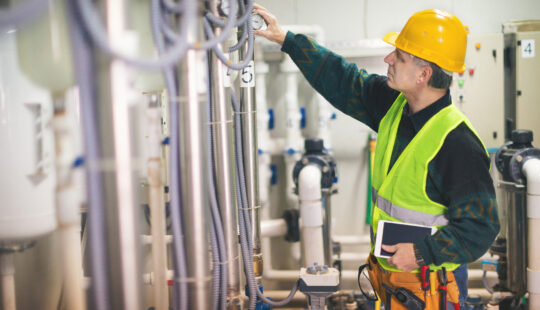Accelerated climate change, skyrocketing cybercrime incidents, and the global pandemic have not only exposed just how vulnerable we are, but also how we define essential services.
Like many countries worldwide, the Australian government has embarked on massive critical infrastructure reform, allocating upwards of A$140 billion to a range of projects. Make no mistake, this spend on the likes of renewable energy, advanced transportation, and communications networks that help keep people fed, connected, and safe represents the future of this country’s sustainable economy and society.
Digitalization Reduces Project Risk, Increases Cost Savings
This could be the next golden age for the engineering and construction industry, but only if public and private sector innovators also usher in the next phase of digitalization. Enter digitized infrastructure, a vision that promises to foster groundbreaking collaboration across the lifetime of a project, from design and construction through operations, maintenance, and beyond. It can help the entire infrastructure ecosystem – government agencies, private contractors, logistics and engineering firms, and other partners – sustainably complete major projects on time and within budget.
“This is much more than automating manual processes. A digitalized infrastructure platform fundamentally changes how people collaborate on large infrastructure projects,” said Chris Peck, executive general manager of Public Services at SAP ANZ. “Uniting individuals, teams, and organizations on a single platform with a common data environment that captures real-time data will support accurate decision-making across the full life span of the asset.”
Advanced Digital Twins See Around Corners
Digital twins are foundational to the digitized infrastructure vision. A digital twin centralizes all the data involved in a project, allowing the asset owner, prime contractor and subcontractors, architects, engineers, council, regulatory bodies, and any other designated partner to effortlessly share information and move the project along in a timely manner. The digital twin integrates and analyzes information from all types of applications, including engineering and architecture CAD, spatial, SCADA, asset management, and enterprise resource planning (ERP) systems.
However, according to Greg Stone, head of Corporate Development at Arup, a 75-year-old global design and engineering consultancy, these aren’t your typical digital twins.
“We’ve been working with three-dimensional representations for quite some time, but with digitization we can level up to an industrial, enterprise-wide scale,” he said. “Now we can innovate to stress test an asset structurally against numerous real-world criteria to make modifications before something is built or retrofit to an existing structure.”
Stone said that Arup is working with transport authorities in New Zealand to create powerful agent-based models (ABM) for ‘what-if’ planning purposes. Whether it’s a new transport system, existing building redesign, or other community infrastructure project, the model can analyze the potential impact of proposed changes, factoring in a wide range of issues, such as what planners should consider given the impact on the environment and society at-large.
Digital Thread of Information Takes the Long View
Connected data is particularly important when companies such as cloud services providers are designated as “critical asset owners” by the Australian government. As managers of information that’s required to operate infrastructure like renewable electricity plants, new hospitals, and transportation hubs, these providers need to comply with certain regulations so they can deliver a trusted essential service.
“Organizations typically use different software programs, making approval processes unnecessarily cumbersome and often error-prone,” said Johnny Clemmons, global vice president and head of Engineering, Construction, and Operations at SAP. “Digitizing the process breaks down silos between the construction, handover, and maintenance phases, helping partners work more efficiently and accurately with full transparency into progress against expected milestones. For example, the foundation of end-to-end digitization is SAP Business Technology Platform connected to the digital twin and intelligent networks.”
Large infrastructure projects are expensive and have decades-long life spans. With data and visualization connected in a digital twin, organizations can improve cost savings, better manage safety and risk, and develop services to meet evolving community and citizen needs.
“Digital engineering harnesses data to get better outcomes for the built environment,” said Stone. “Bringing together data from the business domain, technical engineering specialists, and enterprise-grade business process platforms unites every stage of a project in a much more streamlined and impactful way. This is especially important to help meet net-zero targets.”
Arup created a cloud-based system that helps offshore wind farms more reliably monitor irreplaceable foundations, cost-effectively extending the structure’s operating life. By combining monitoring data with the wind farm’s asset management system, operators have greater insights into performance for risk-based inspection and maintenance.
Future-Proofing Digitalization
Digitized infrastructure is much more than the next transient, shiny thing. It’s the thread that weaves together vast amounts of data to tell the full story of an asset to every partner working on a project. It can deliver much more than short-term efficiencies and cost savings across major industries like public services, utilities, transportation, oil and gas, mining, and healthcare. If we start now, community planners in 2051 will have the data to know exactly what went into a project completed in 2021, meaning fewer costly surprises and better long-term results for the community. That’s the kind of innovation future generations are counting on from us.
Follow me @smgaler
This article also appeared on SAP BrandVoice on Forbes.



